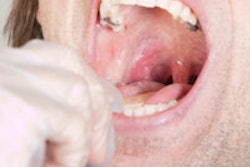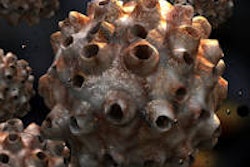
In the largest investigation on the role of major risk factors for head and neck cancers (HNC) in young adults, researchers found that these cancers are more likely the result of inherited factors, rather than lifestyle factors such as smoking or drinking alcohol, according to a new study in the International Journal of Epidemiology (January 22, 2015).
 Tatiana Natasha Toporcov, DDS, PhD, professor, Department of Epidemiology, University of São Paulo School of Public Health. Image courtesy of University of São Paulo.
Tatiana Natasha Toporcov, DDS, PhD, professor, Department of Epidemiology, University of São Paulo School of Public Health. Image courtesy of University of São Paulo.As more than 500,000 new cases of HNC are diagnosed worldwide annually, a team of international researchers pooled data from 25 studies from the International Head and Neck Cancer Epidemiology (INHANCE) consortium to compare the role of major risk factors and family history in HNC for young adults (45 years of age or younger) and older adults (older than 45). Researchers totaled more than 2,000 cases and more than 4,000 controls in young adults and 17,700 cases and 22,704 controls in older adults. The large sample size allowed researchers to elucidate any differences in the role of risk factors in HNC in young adults according to age group, sex, and cancer subsites.
Participants' history of cigarette smoking, alcohol consumption, and diet, as well as any family history of cancer, were queried. Lead study author Tatiana Natasha Toporcov, DDS, PhD, a professor in the department of epidemiology at the University of São Paulo School of Public Health, and colleagues found that the attributable fraction (an estimate of the proportion of cases that could be avoided if the exposures were eliminated) for smoking on the risk of HNC was 20% in young women, 49% in older women, 46% in young men, and 64% in older men. The same measurement for alcohol consumption was 5% in young women, 20% in older women, 22% in young men, and 50% in older men. Eating a diet rich in fruits and vegetables is inversely associated with HNC risk in both age groups, they found.
Family history of any type of cancer was directly associated with HNC risk only among the older group, but a family history of early-onset cancer was associated with HNC risk only in young adults. The attributable fraction for family history of early-onset cancer on the risk of HNC was 23.2% in young adults and 2.2% in older adults.
Results
The rates of oral tongue cancer (16.0% in women, 11.0% in men) and unspecified oral cavity/oropharynx cancer (16.2% in women, 11.1% in men) were higher in the young adult group. Those younger adults also saw a lower proportion of larynx cancer (12.1% in women, 16.6% in men) than older adults.
“A family history of early-onset cancers was associated with an increased risk of HNC in young adults but not older people.”
The study's other key findings include the following:
- Cigarette smoking and alcohol consumption were associated with a risk of HNC in younger and older adults, although in younger adults the association was weaker, probably due to shorter exposure.
- The protective effects of a diet rich in fruits and vegetables on HNC was consistent among younger and older people.
- A family history of early-onset cancers was associated with an increased risk of HNC in young adults but not older people.
"Although they were less likely to be drinkers and/or smokers, alcohol consumption was a risk factor for HNC in [young adults]. However, a stronger association with heavy drinking was observed for the older group," Dr. Toporcov, DDS, PhD, said in a statement.
"Our results support public health efforts to decrease exposure to major risk factors for HNC in the population regardless of age," Dr. Toporcov concluded.
However, more investigation is needed on the role of other HNC risk factors in the younger group, such as human papilloma virus (HPV) and inherited characteristics, the study authors noted.



















